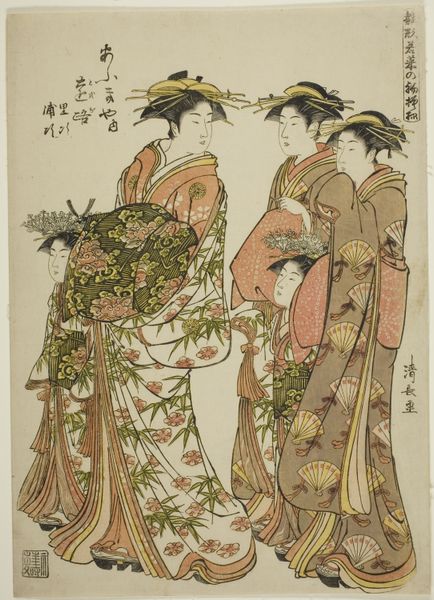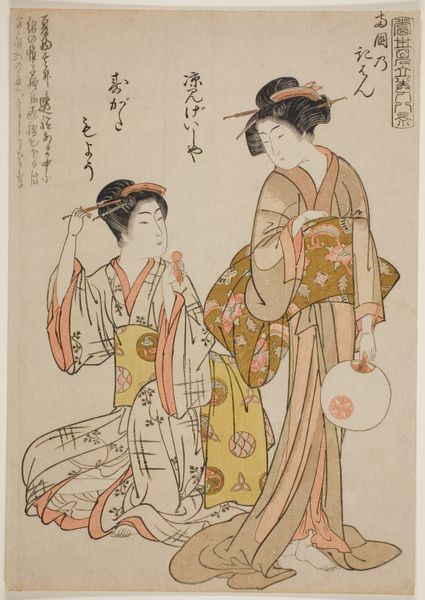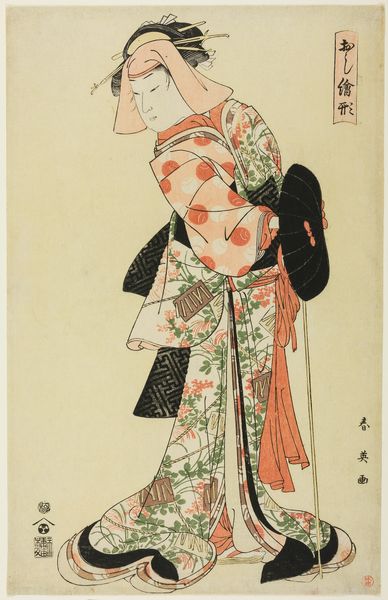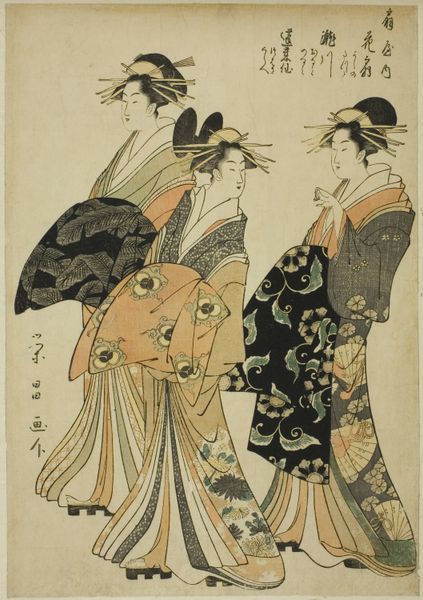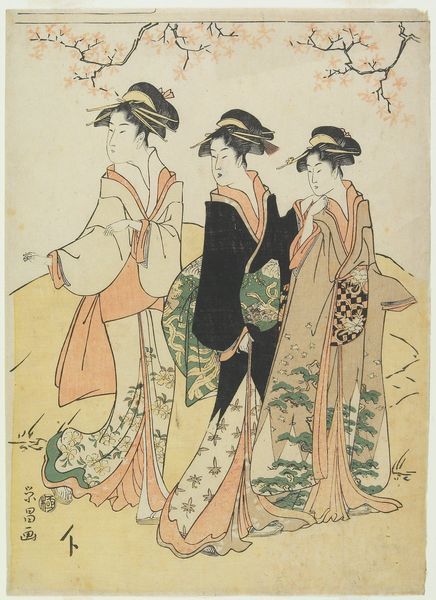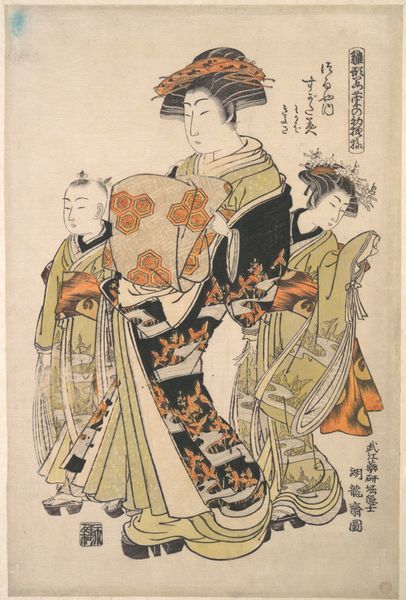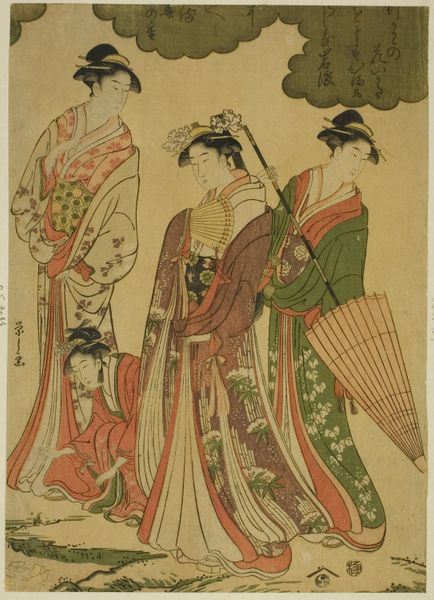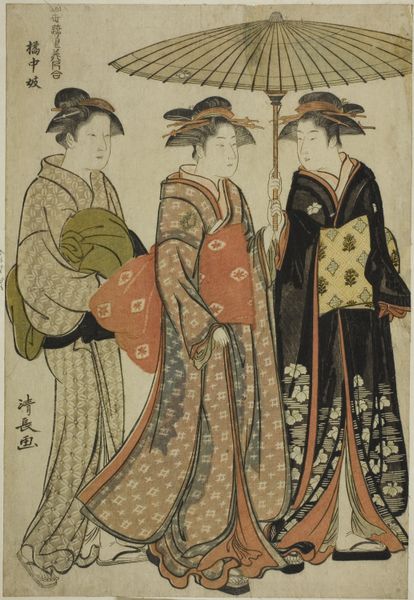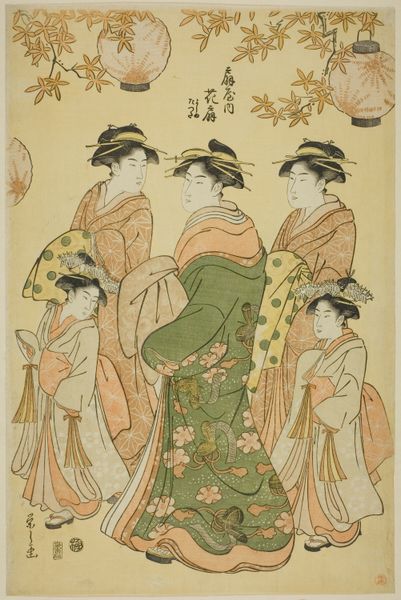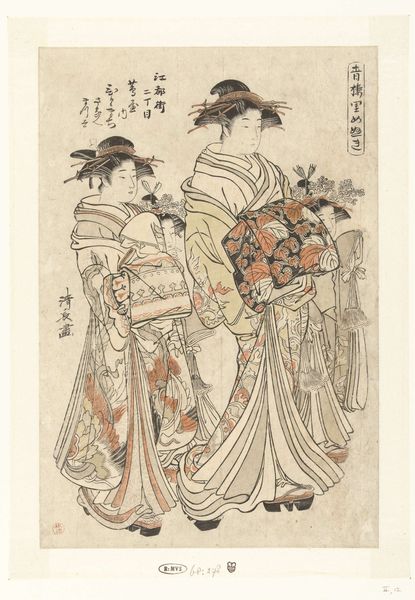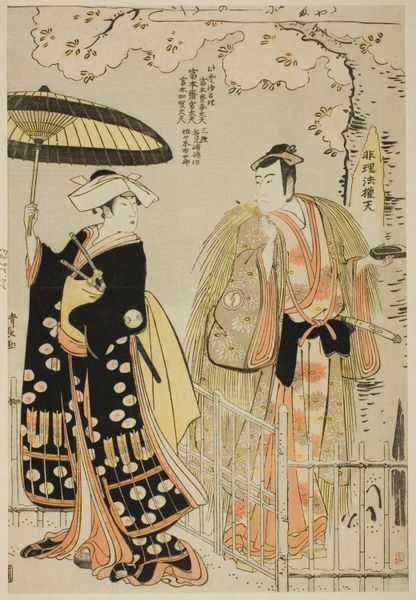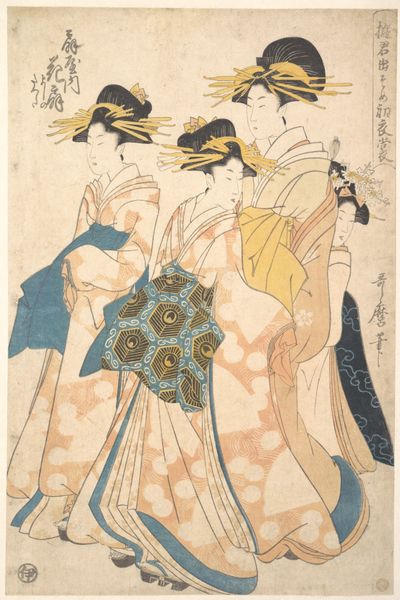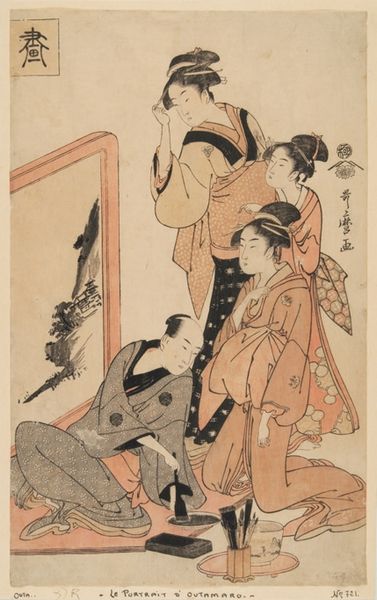
The Courtesan Hanaogi of the Ogiya with Her Attendants Yoshino and Tatsuta, from the series "Models for Fashion: New Designs as Fresh as Young Leaves (Hinagata wakana no hatsu moyo)" c. 1781
0:00
0:00
print, textile, woodblock-print
#
portrait
# print
#
asian-art
#
textile
#
ukiyo-e
#
figuration
#
woodblock-print
Dimensions: 37.3 × 25.3 cm
Copyright: Public Domain
Curator: Here we have "The Courtesan Hanaogi of the Ogiya with Her Attendants Yoshino and Tatsuta, from the series 'Models for Fashion: New Designs as Fresh as Young Leaves'," a woodblock print by Torii Kiyonaga, dating back to around 1781. Editor: It strikes me immediately as a study in elegance and quiet strength. There’s something profoundly still about these women, even as they’re captured in motion. Curator: Kiyonaga was really revolutionizing the depiction of women at this time. Before him, Ukiyo-e prints often showed women as very idealized, almost doll-like. Editor: Yes, and you sense something different here. A grounded quality. Look at how the lines of their kimono fall, echoing the curve of fans – a gentle geometry governing their presence. The textile design almost overwhelms the subjects; who really has depth in this frame? Curator: Absolutely, he elongates the figures, gives them a kind of statuesque quality that emphasizes their height. But I also see such a sensitivity to pattern; it's so beautiful and subtle. It creates almost an abstract symphony out of clothing. Each woman is draped in a slightly different design. And they provide insight into the high-end aesthetic of the pleasure quarters. Editor: I'm fascinated by how these women are not looking out at us. Their gazes are averted, inward almost. It’s as if they exist within their own world. Though, arguably, a highly constructed one. We are allowed to observe, but not intrude, isn’t it? Curator: The averted gaze adds so much depth to the scene. And if you notice, there are only five colours present, which makes for a sophisticated final impression and indicates that he designed this as a multi-block print, carved meticulously. Editor: Right! So, we're left to consider the layers of meaning woven into not just the image, but the construction of that image as well. Curator: For me, the print offers a look into the lives of these fascinating women of the Edo period, each presented with so much individuality and grace. Editor: And I’m left pondering the formal language – the careful use of line and space and a real sense of harmony. All serving to highlight these figures’ unique presence, don’t you agree?
Comments
No comments
Be the first to comment and join the conversation on the ultimate creative platform.
